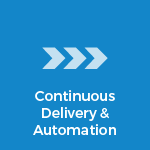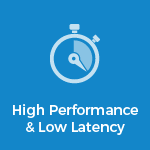
Having a test harness before there will be any scaling issues. Source: Shutterstock
JAXenter: First of all, can you explain why fintech companies need a fraud engine?
Rona Ruthen: Every financial service and every merchant is exposed to fraud, it’s part of the cost of doing business or a necessary evil. Fintechs are especially vulnerable, as in the early days the team is very lean, the focus is on developing the product and systems and finding the product-market fit. It’s challenging to allocate resources to anything else. Fraudsters know that, target fintech companies early on and adapt very quickly to changes in controls.
JAXenter: What are the challenges or costs involved in developing an internal fraud engine for a fintech company?
Rona Ruthen: The main challenge is defining the your fraud engine requirements when your product/processes/market constantly change. It means that the core principles of startups – being lean and agile, create a challenge when it comes to building your own fraud engine. Spending significant time/development resources to build an engine that might not be relevant in 3-6 months, makes it almost redundant in the early days, unless you find a creative way to allow more flexibility. To add to that there are high costs and infrastructure complexity associated with developing an internal fraud tool (we will be discussing it in our talk).
Another challenge is that as a fintech company, your transaction flows and are usually more complicated and time sensitive than the average merchant which creates an added complexity when building the fraud engine. It’s definitely the case for us.
The main challenge is defining the your fraud engine requirements when your product/processes/market constantly change. It means that the core principles of startups – being lean and agile, create a challenge when it comes to building your own fraud engine.
JAXenter: And how about the challenges or costs for an external provider?
Rona Ruthen: Fraud prevention tools and systems have been blooming in the past few years, which has led to a focus on easy and quick integration process (within days), machine learning and a competitive market. While it’s not necessarily cheap (at a per transaction cost) the development resources required are quite minimal and compared to the potential loss due to fraud and chargebacks the math seems very straight forward. However there are additional considerations: dependency on an external provider, SLA’s, Fraud analysts requirements and more.
JAXenter: Why did Curve decide to go with an external provider? What factors led to this decision?
Rona Ruther: We are a classic story. We launched our product and were focused on new features and functionality, supporting our first few thousands of customer and improving our systems all the time. Shortly after we saw the first signs of fraud and it was ramping up quite quickly. We had limited development resources and wanted to focus on our product and building features that would lead to a product-market fit. It was an easy decision to go with an external provider.
JAXenter: Has the FinTech movement triggered a culture shift in banking or are banks resistant to change?
Rona Ruthen: There is no doubt that there is a shift, especially as PSD2 and Open Banking came into effect, demonstrating the regulators support in opening the market to more competition and innovation. However, a change like this takes time as it requires a shift in mindset as well as implementation through robust and complex banking organisations. Some are moving faster than others. I believe we will see increasing focus on customer experience and a higher rate of change as customers will expect more from banks and financial services and the bar will be set higher.

JAXenter: What is the most mature sub-segment in FinTech right now?
Rona Ruthen: Digital Lending is more mature than most segments, with companies like Zopa, Funding Circle and others providing new and better solutions for individuals and businesses, both as borrowers and as lenders.
I’m very excited about emerging and growing sub-segments, such as savings and investments, based on AI and behavioural economics. Moneybox are a great example.
JAXenter: What can attendees expect from your talk?
Rona Ruthen: Federico and I will explain the need for a fraud engine in a fintech company, the complexity of it, which includes both technical and engineering challenges as well as processes and product aspect. We will discuss what a company should take into account when deciding whether to build or buy a fraud engine, our decision process and learnings at Curve and how these decisions may change over the company’s lifetime.
It’s going to be as exciting as catching fraudsters!
Thank you!
Tue. 10 APR 2018,
17:00 – 17:50











